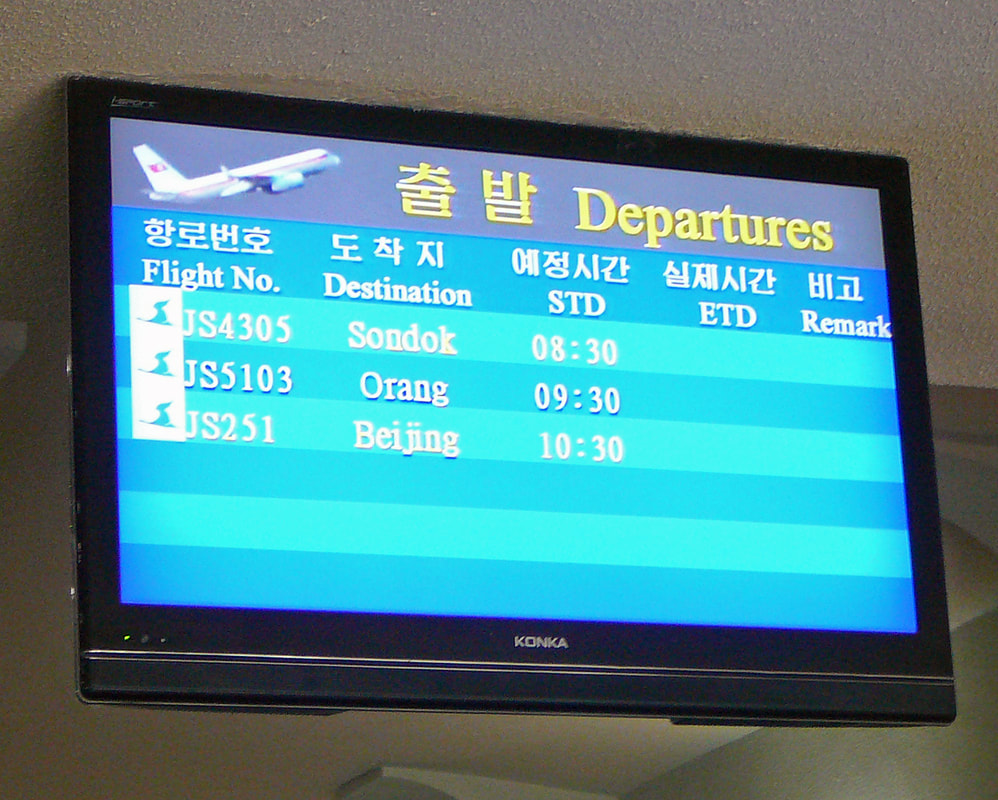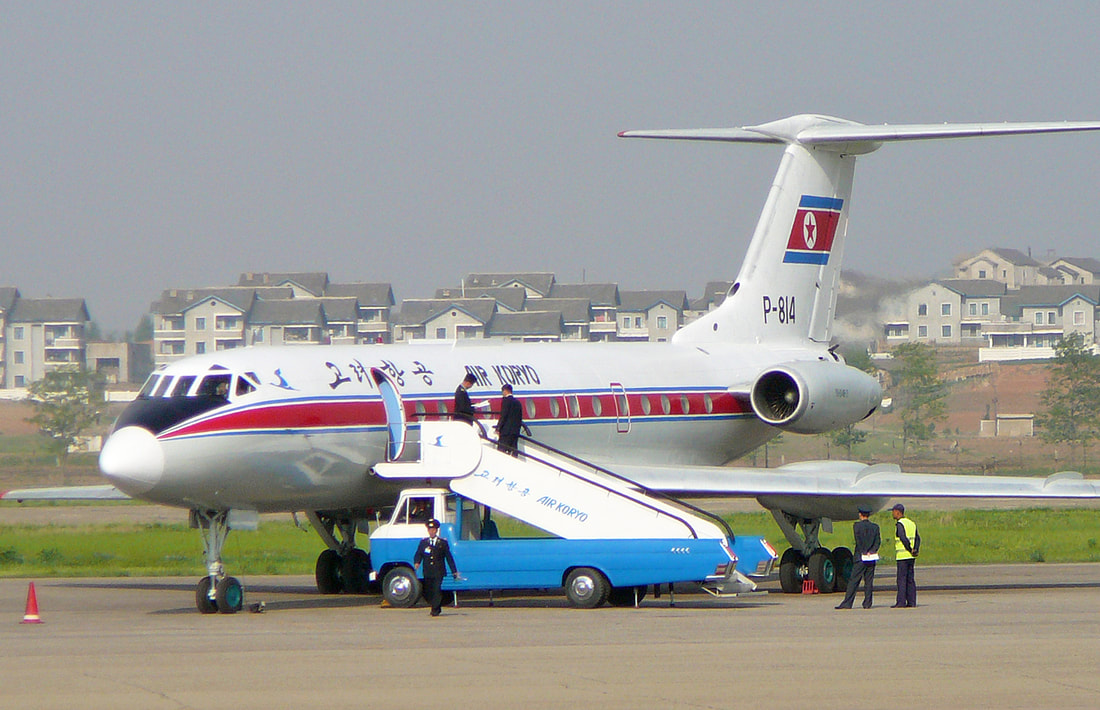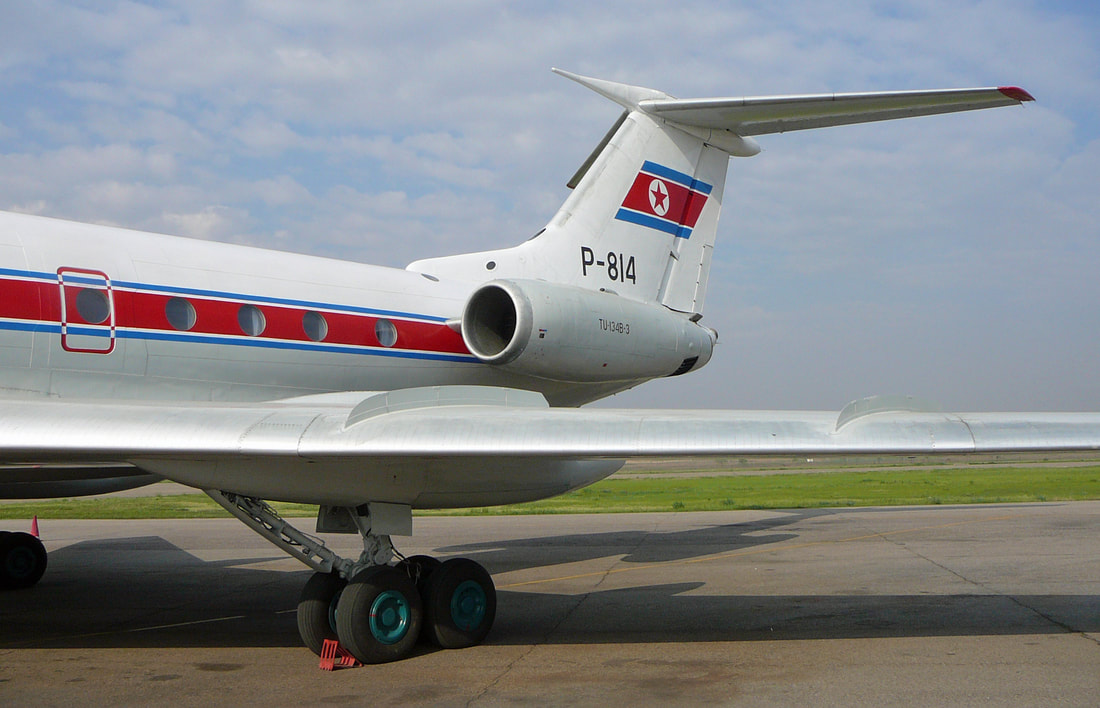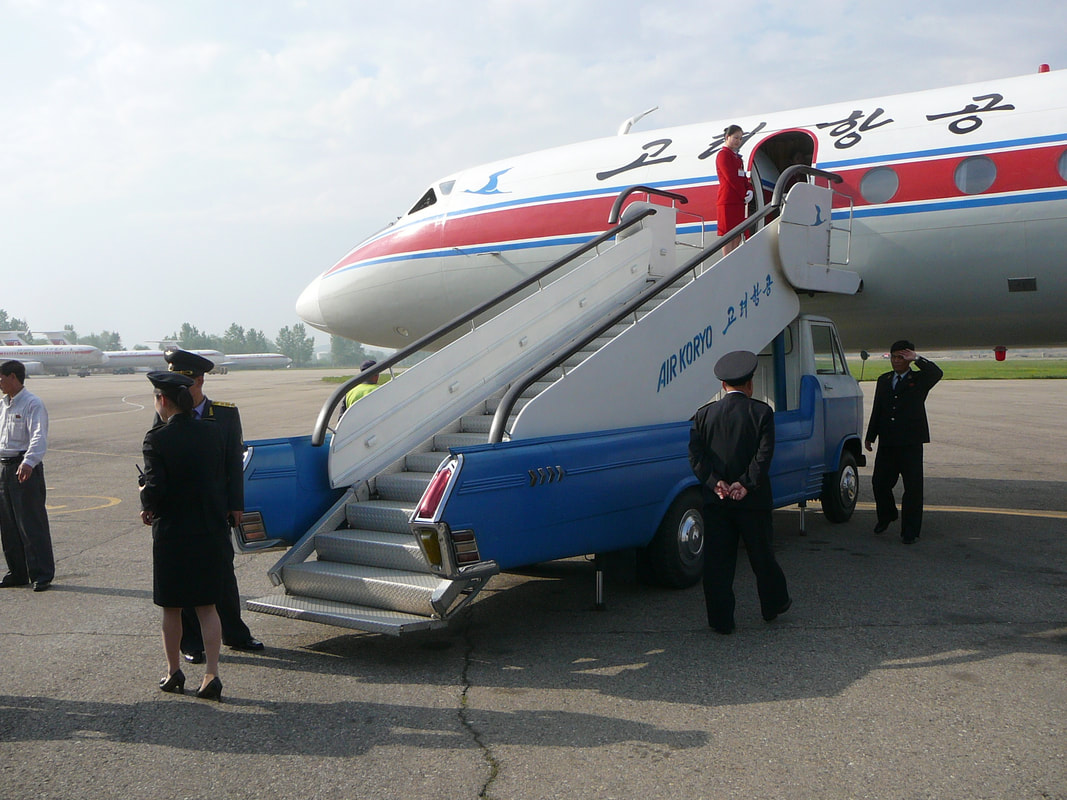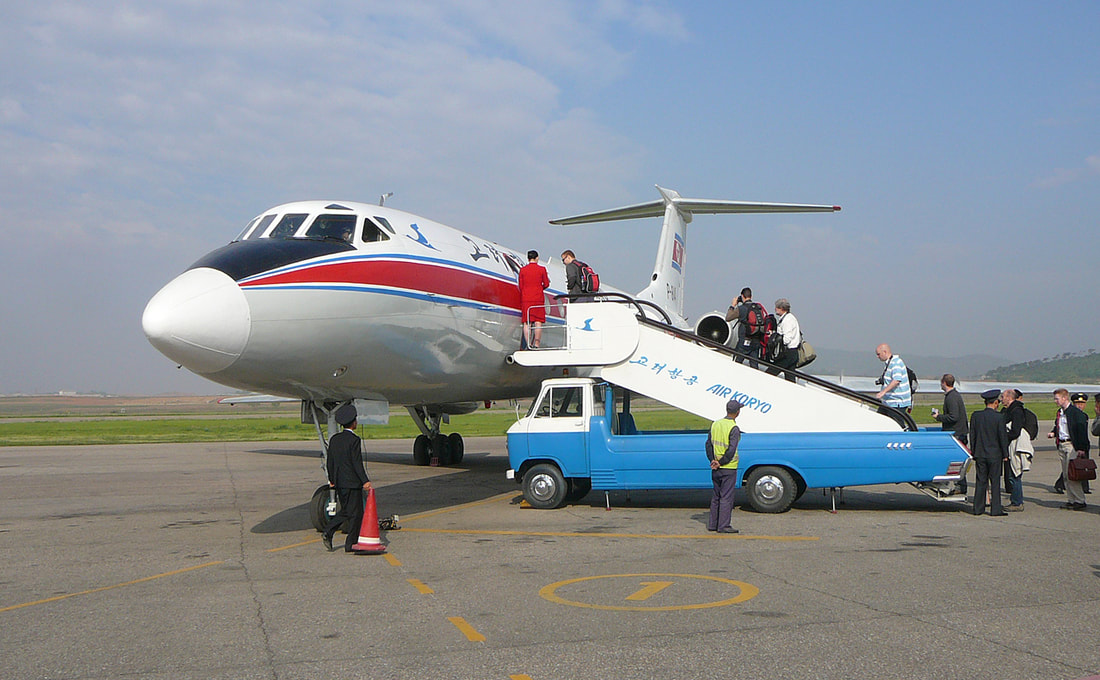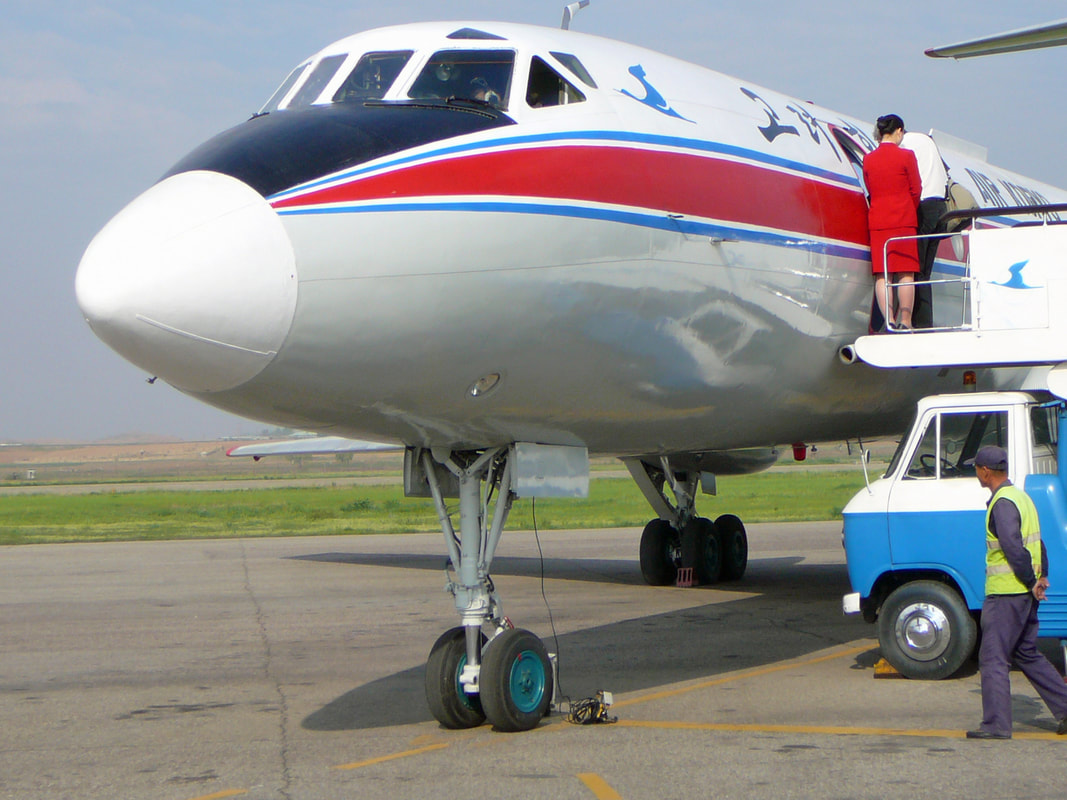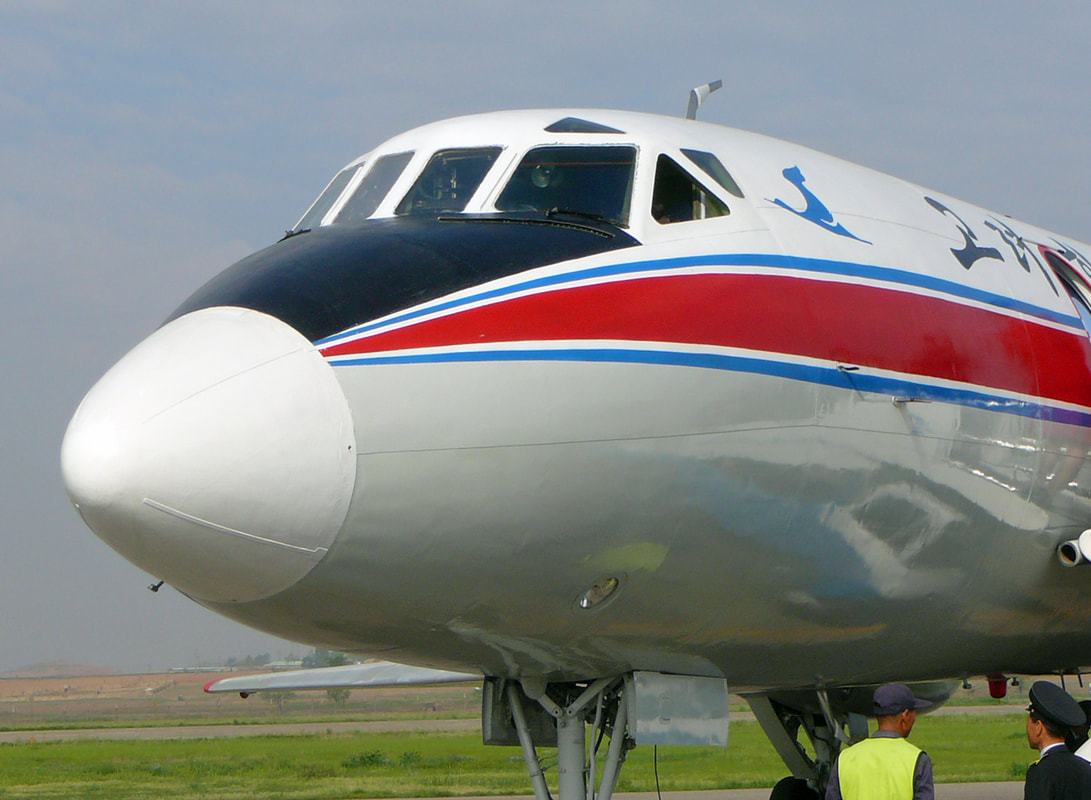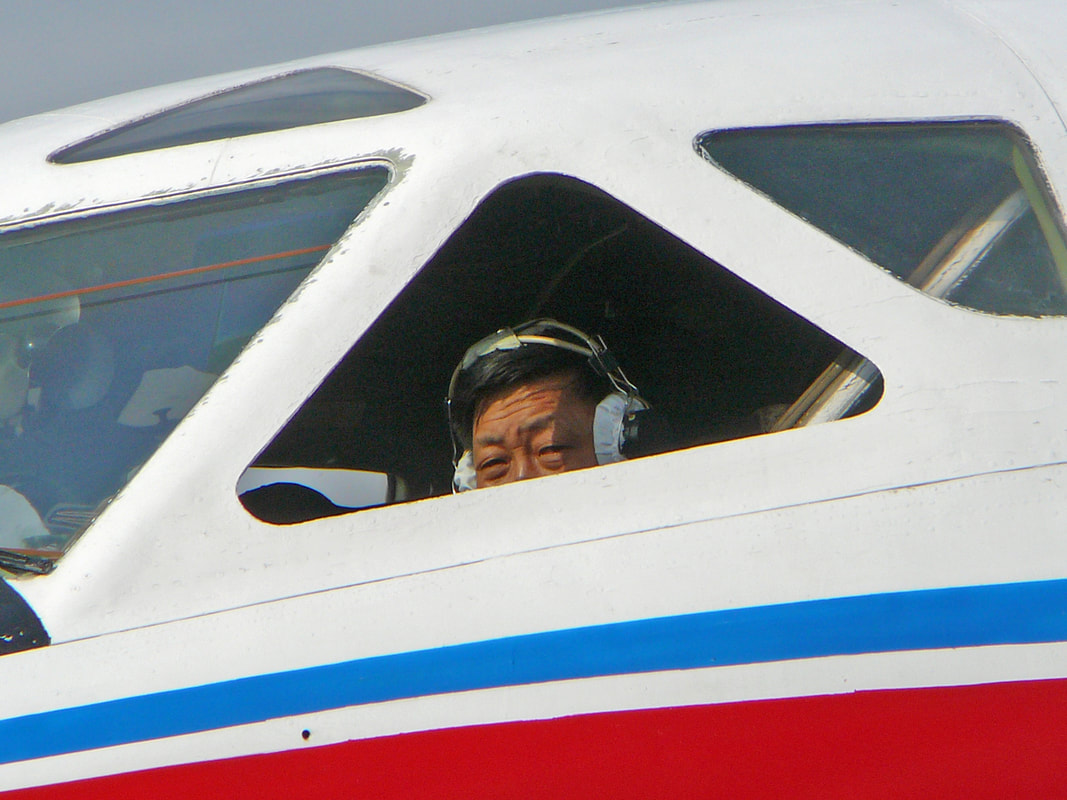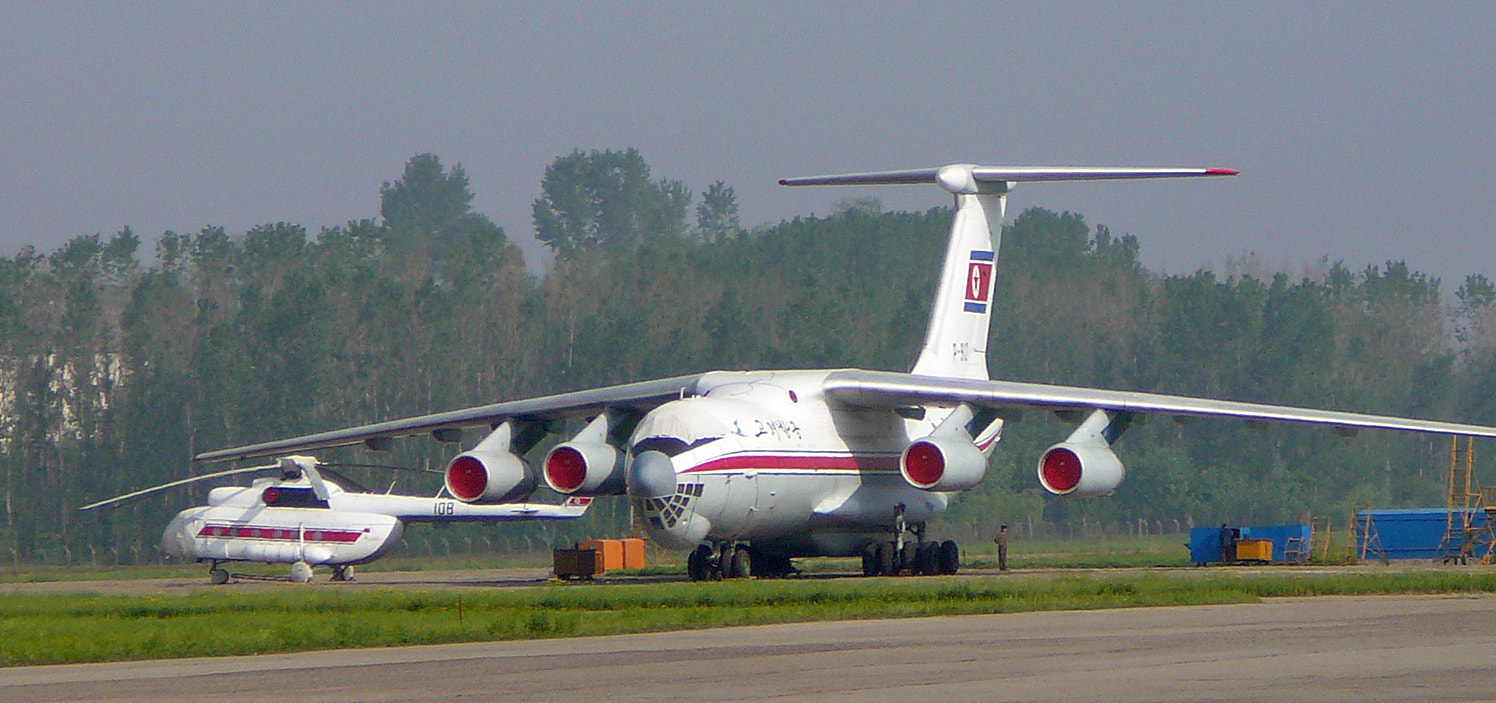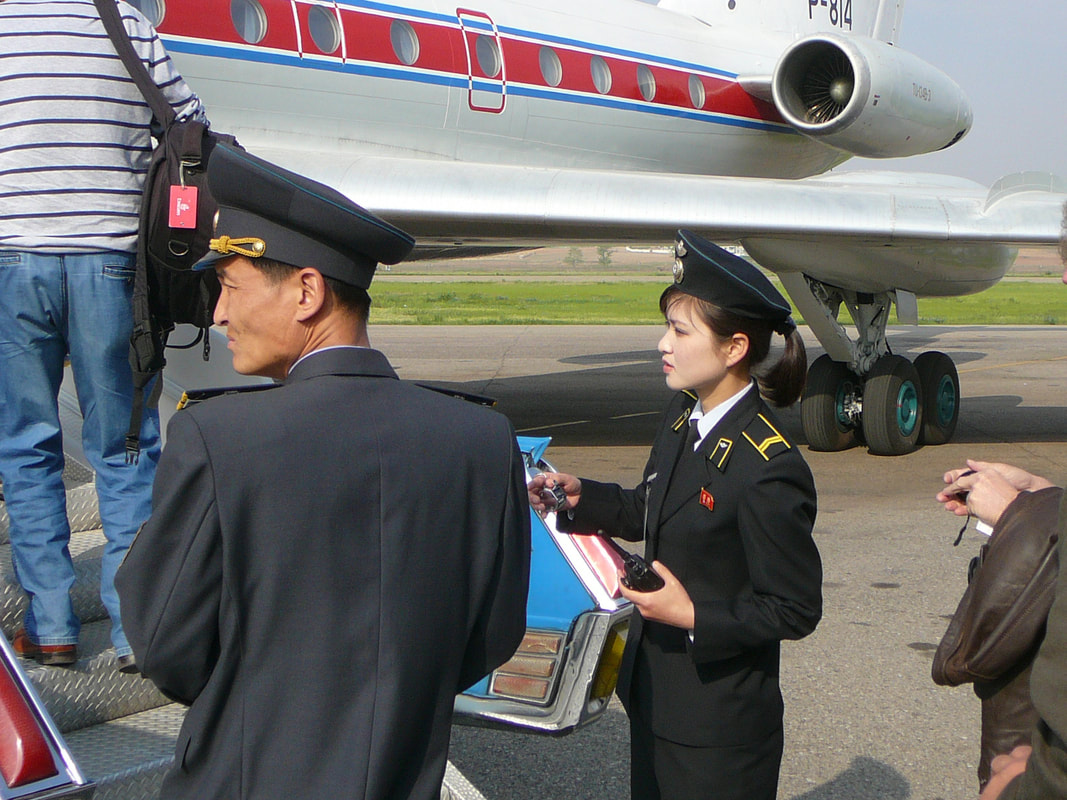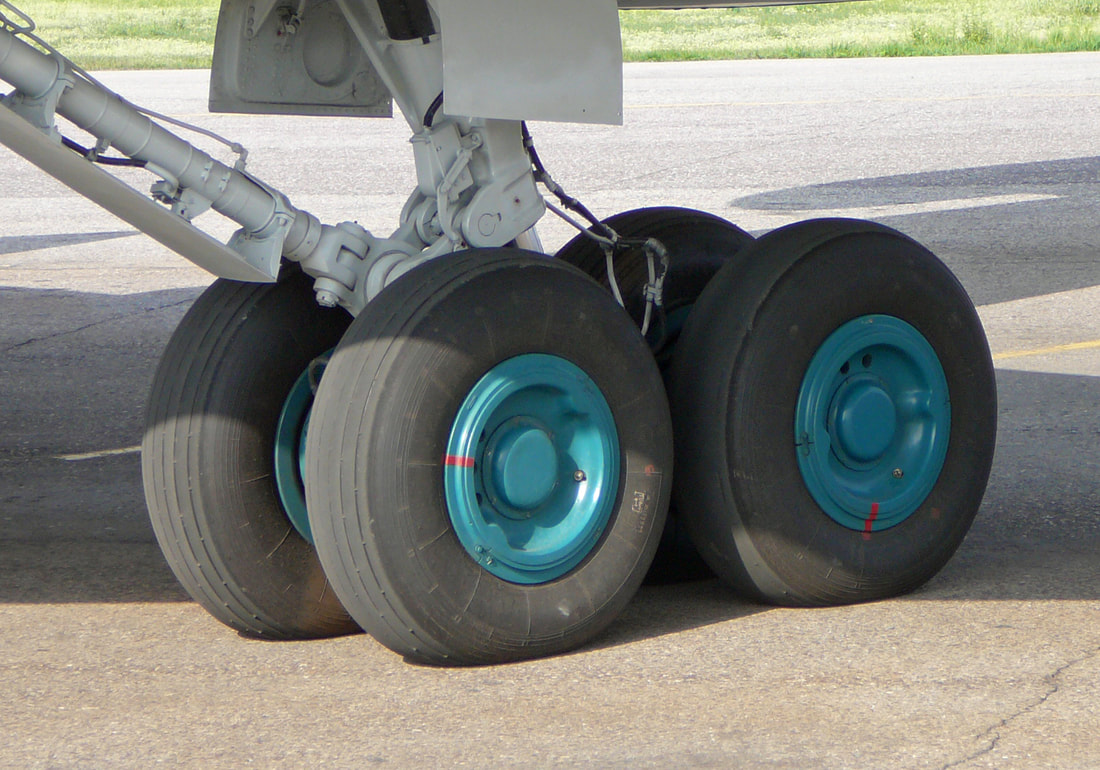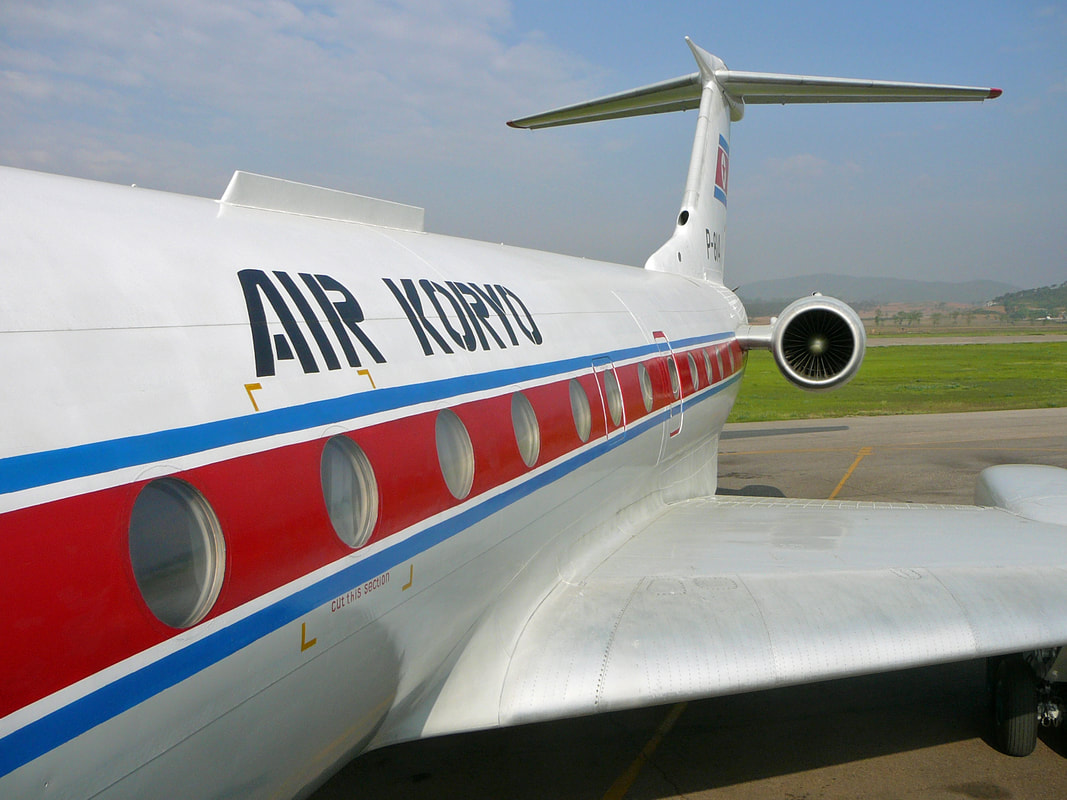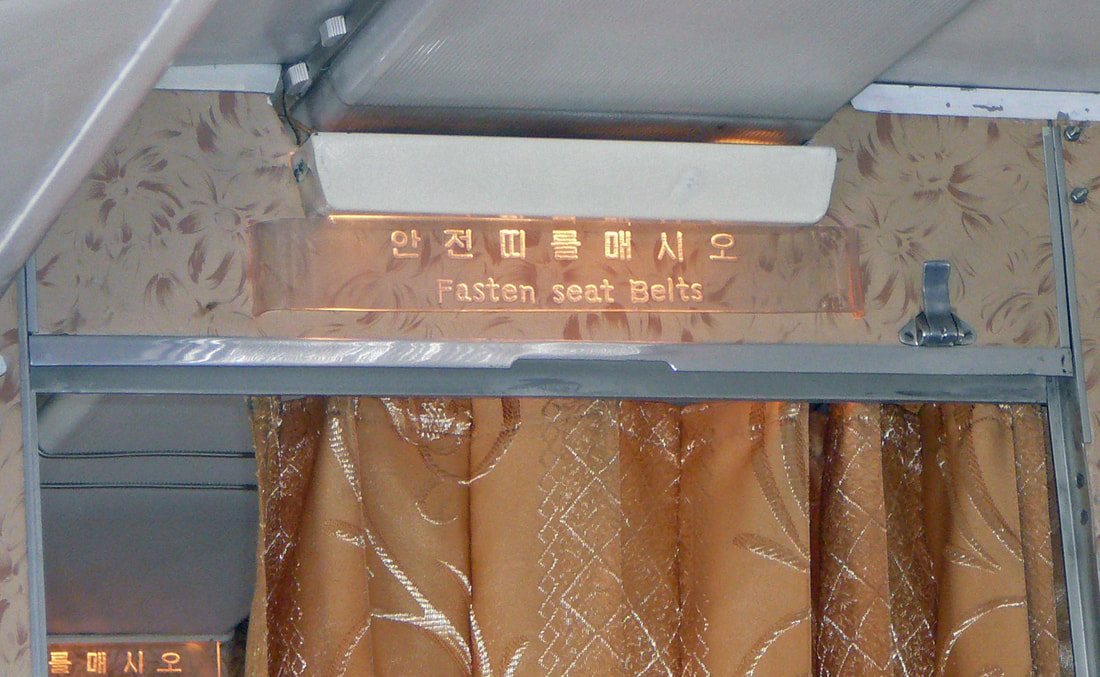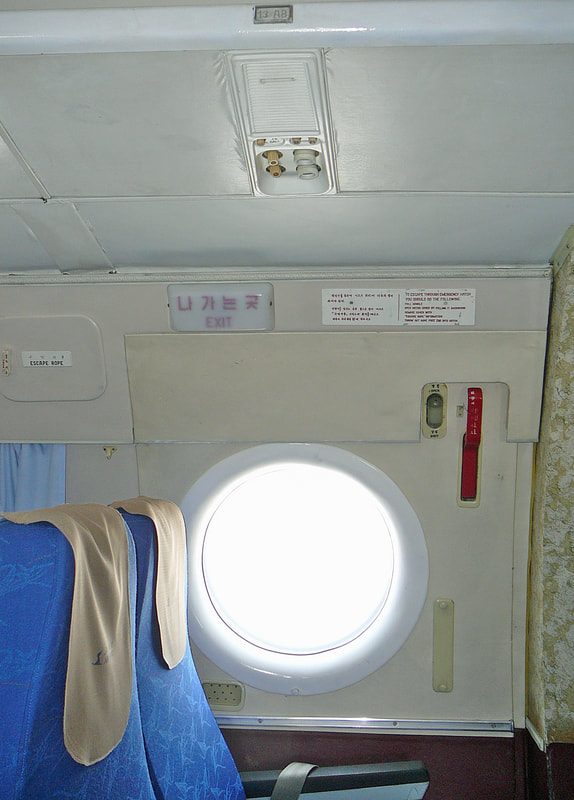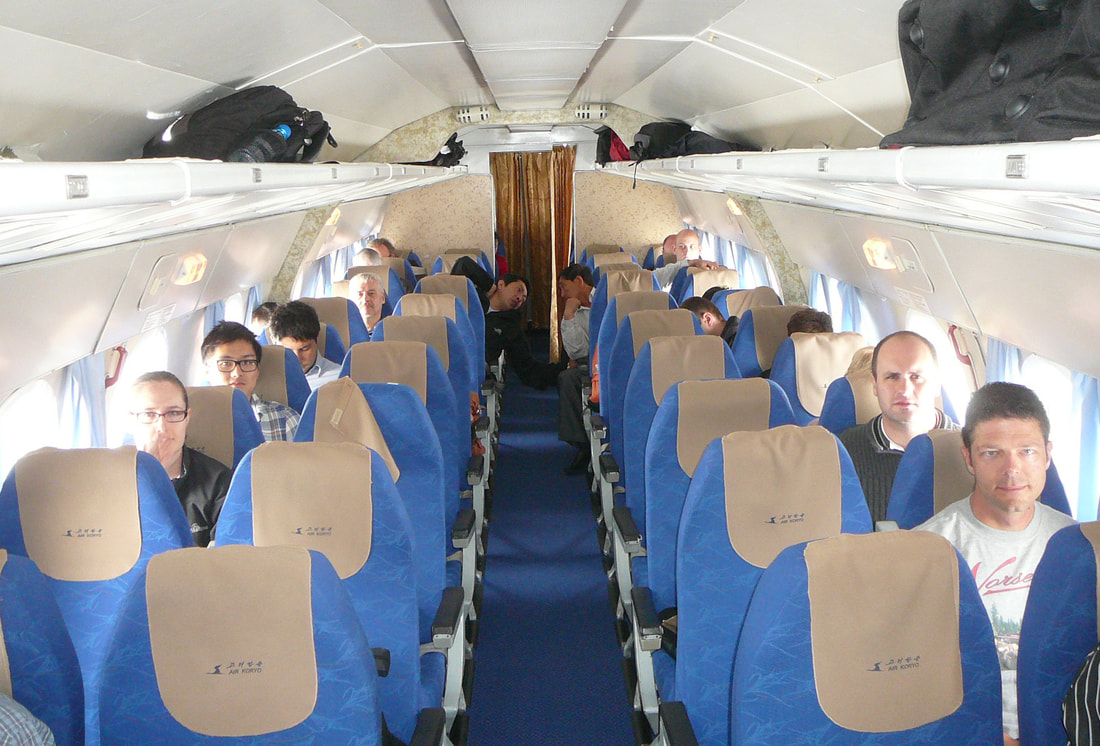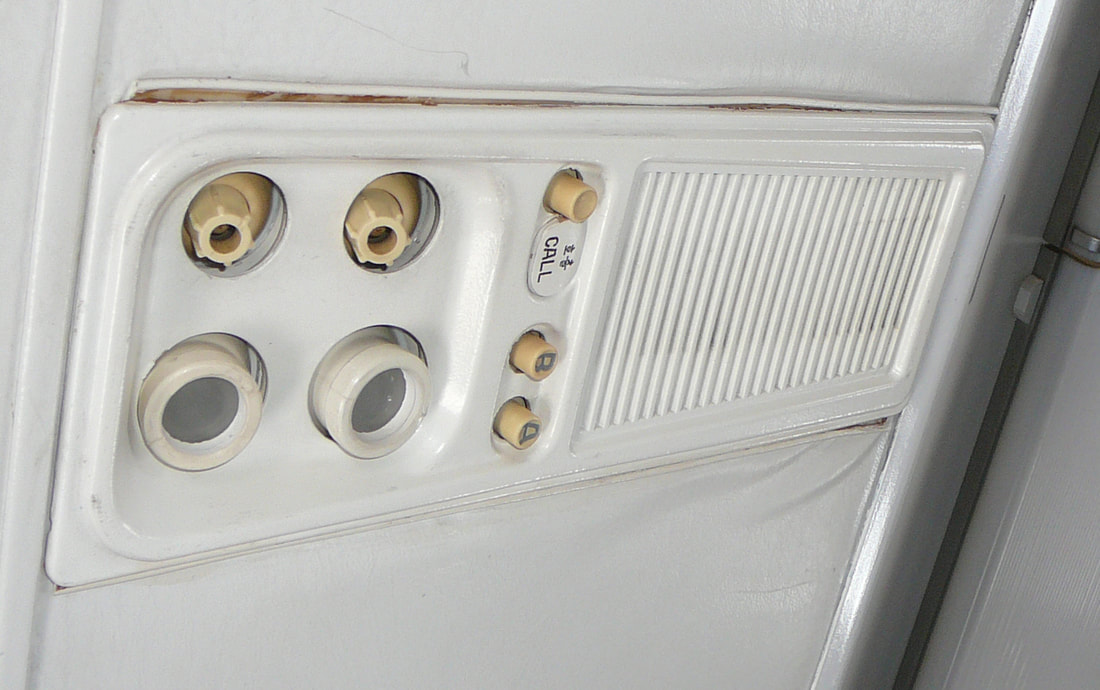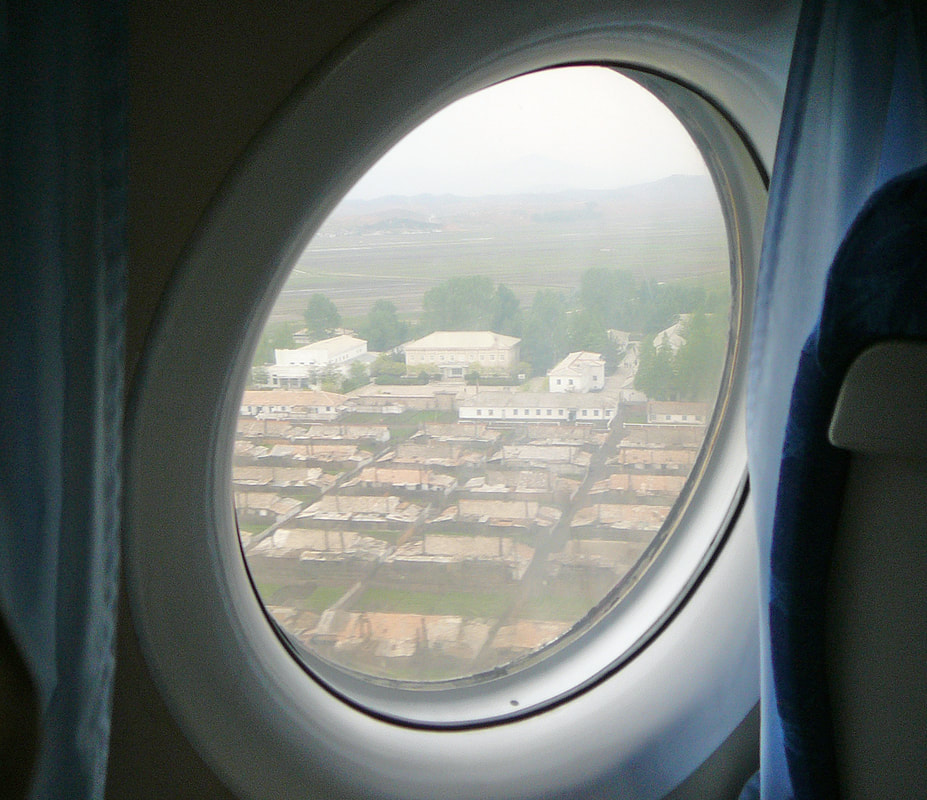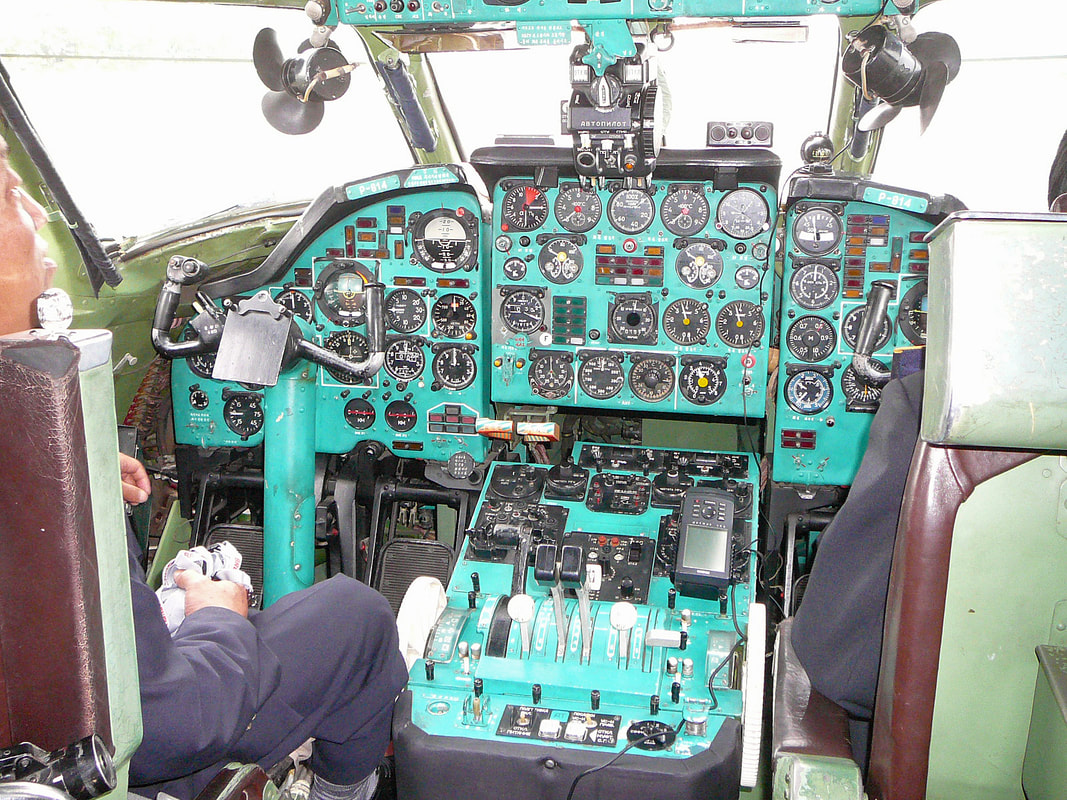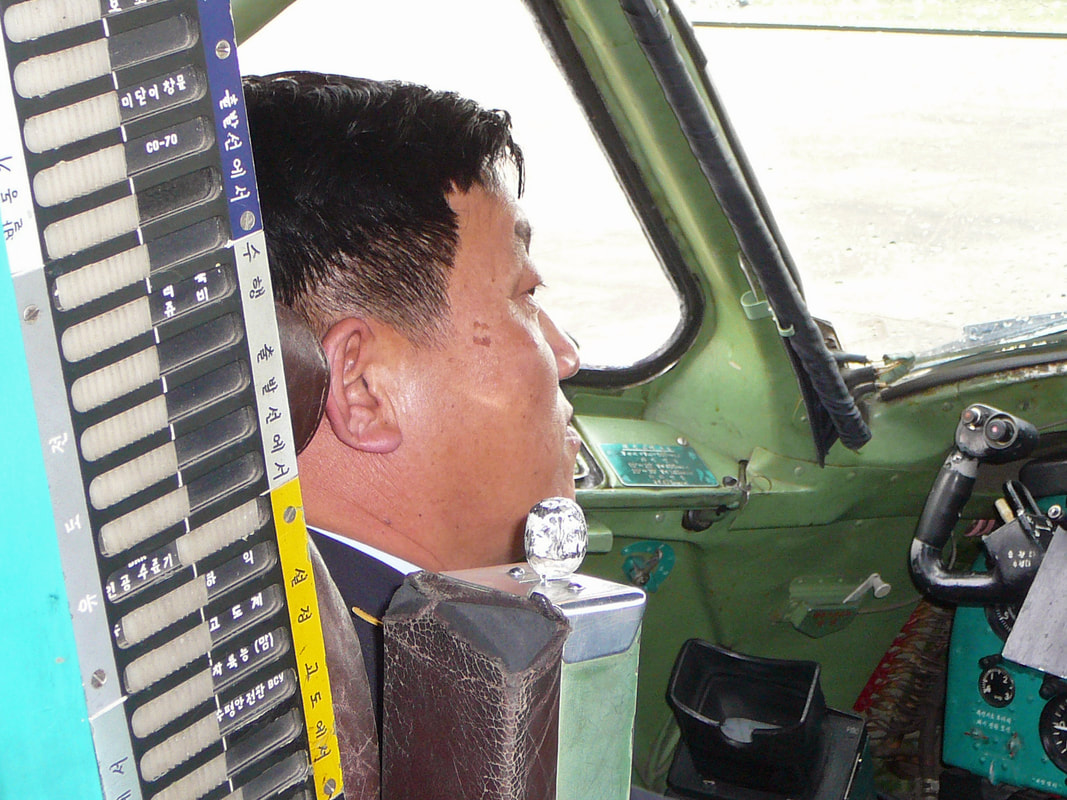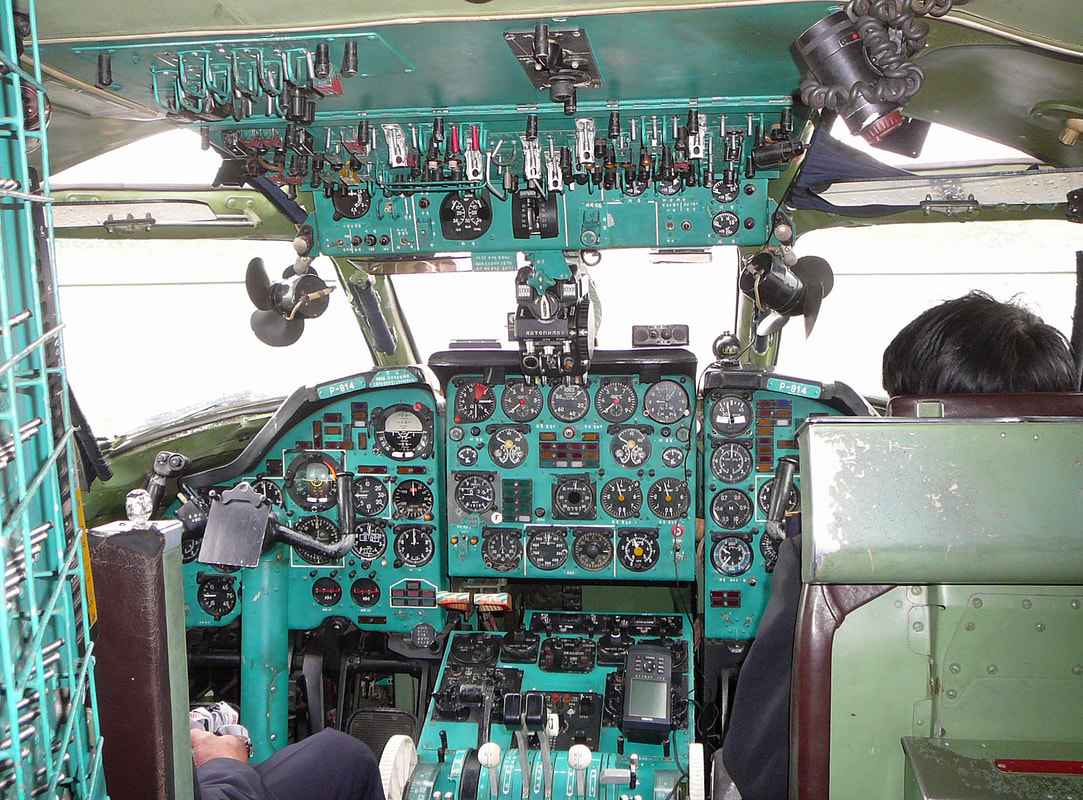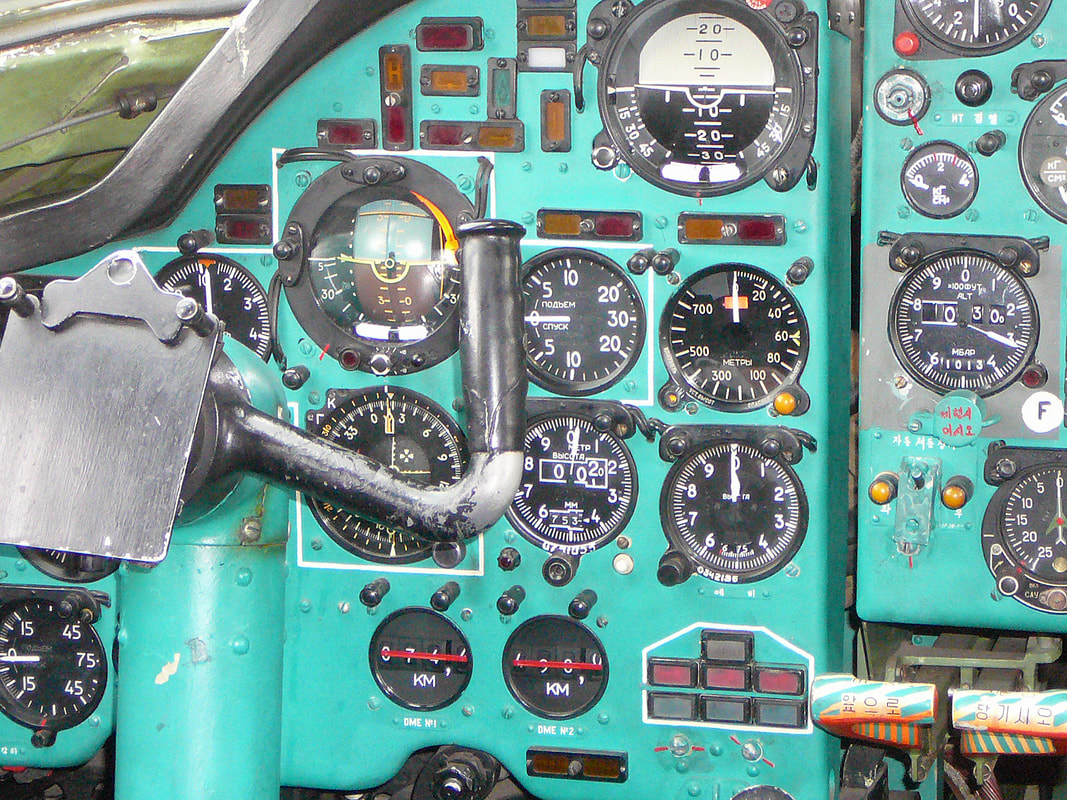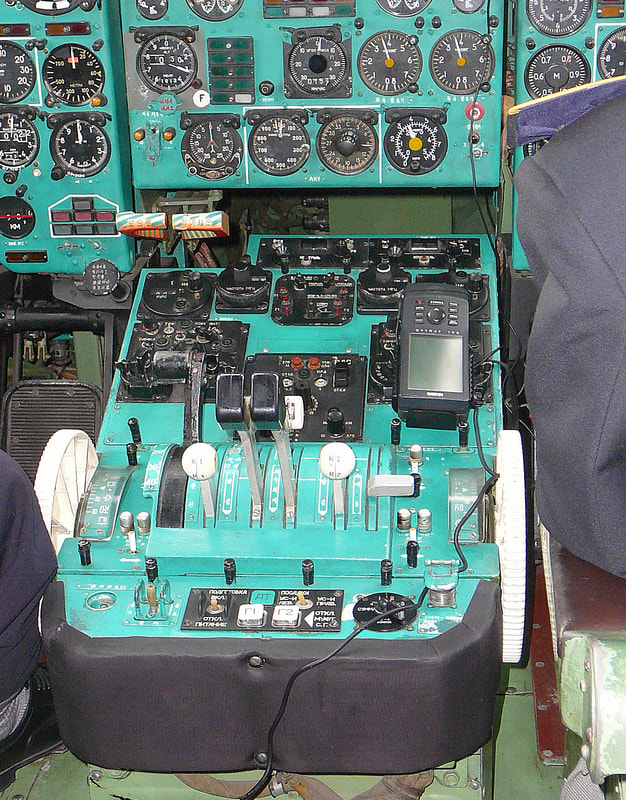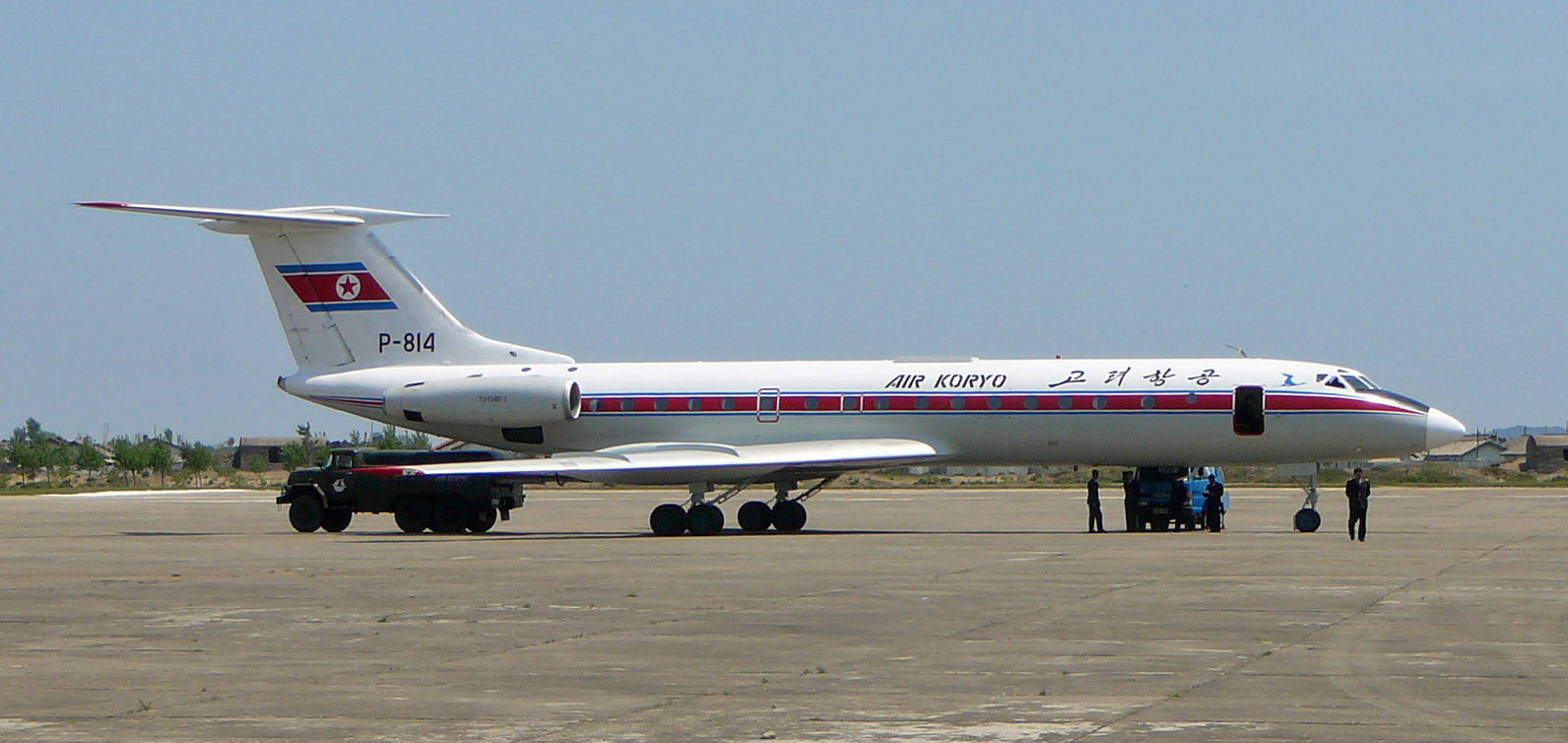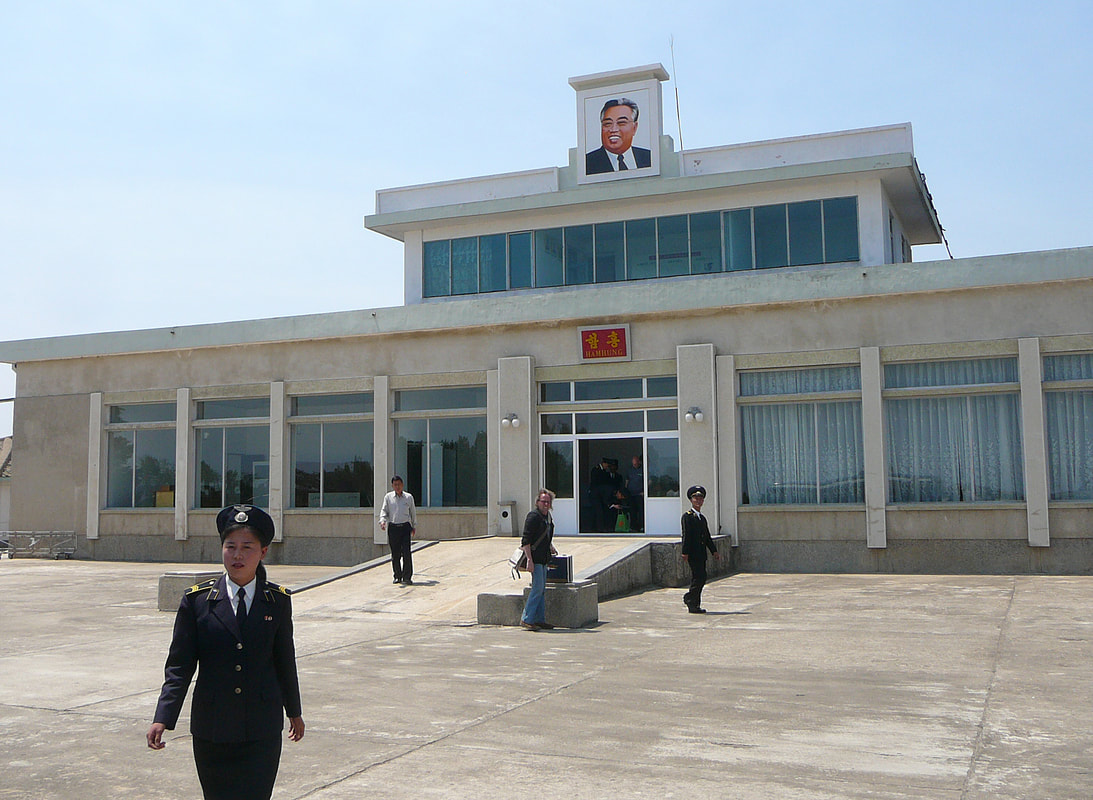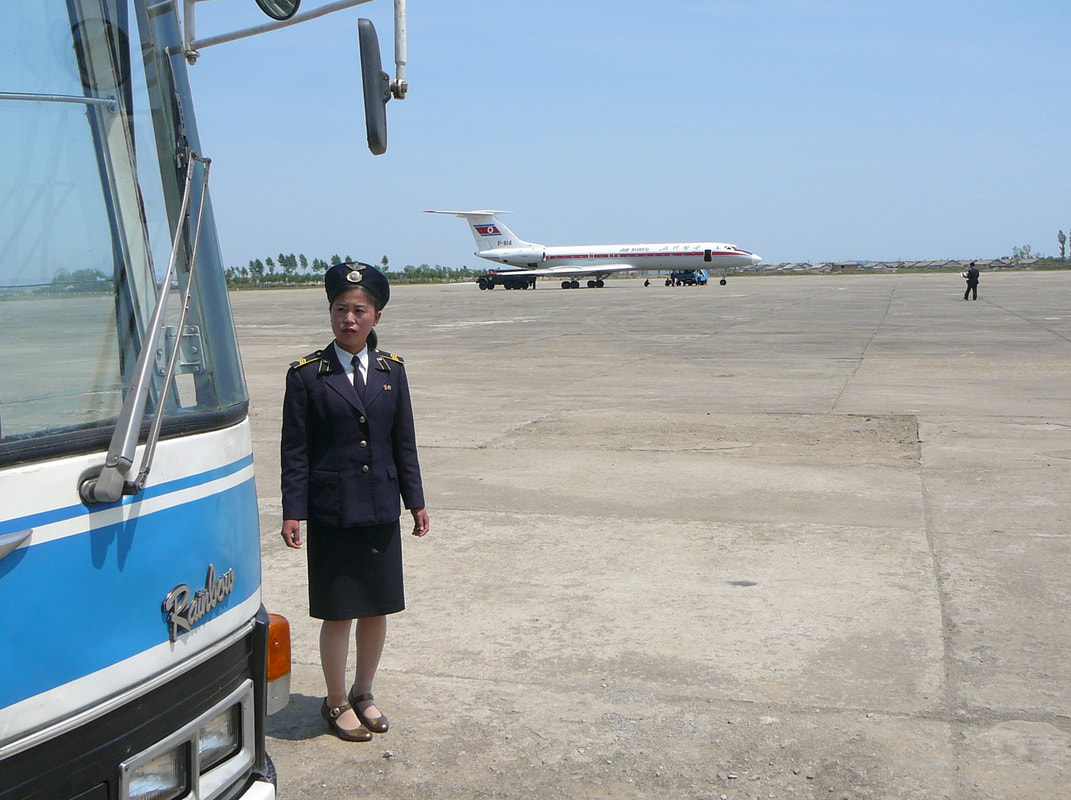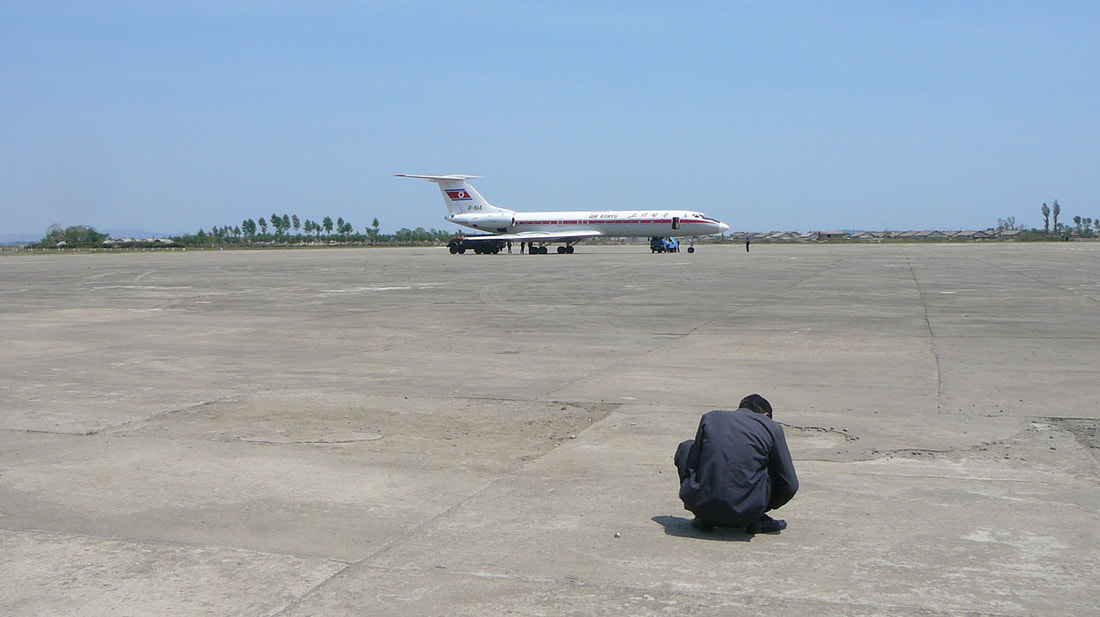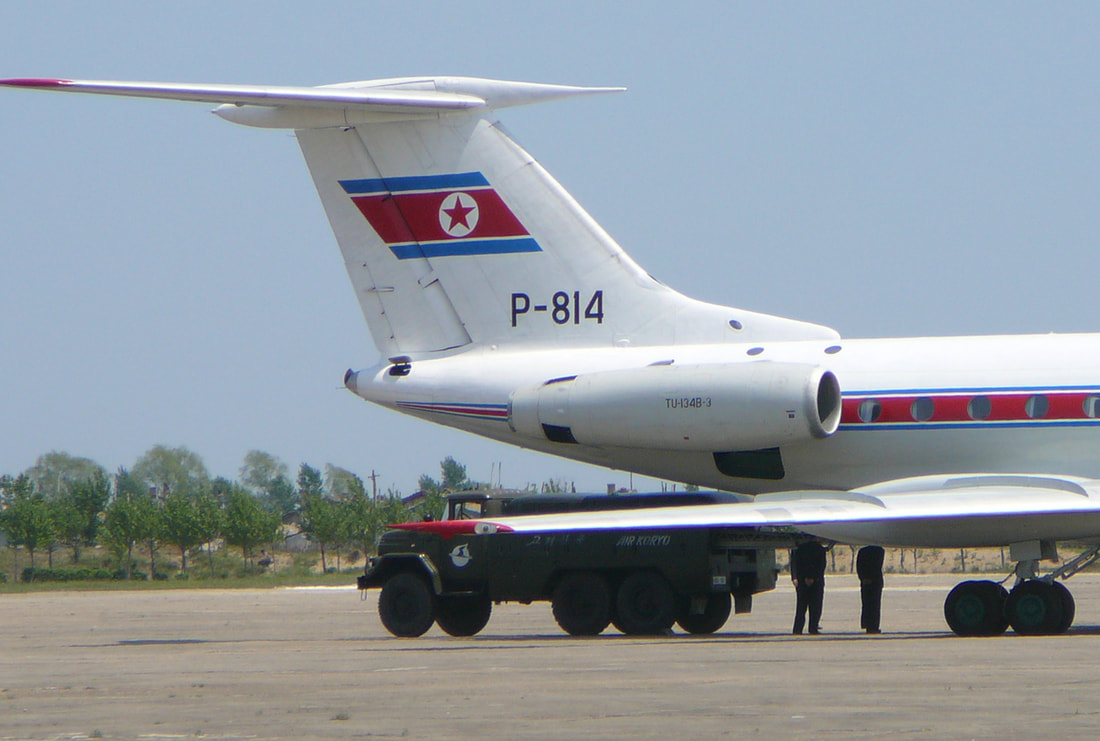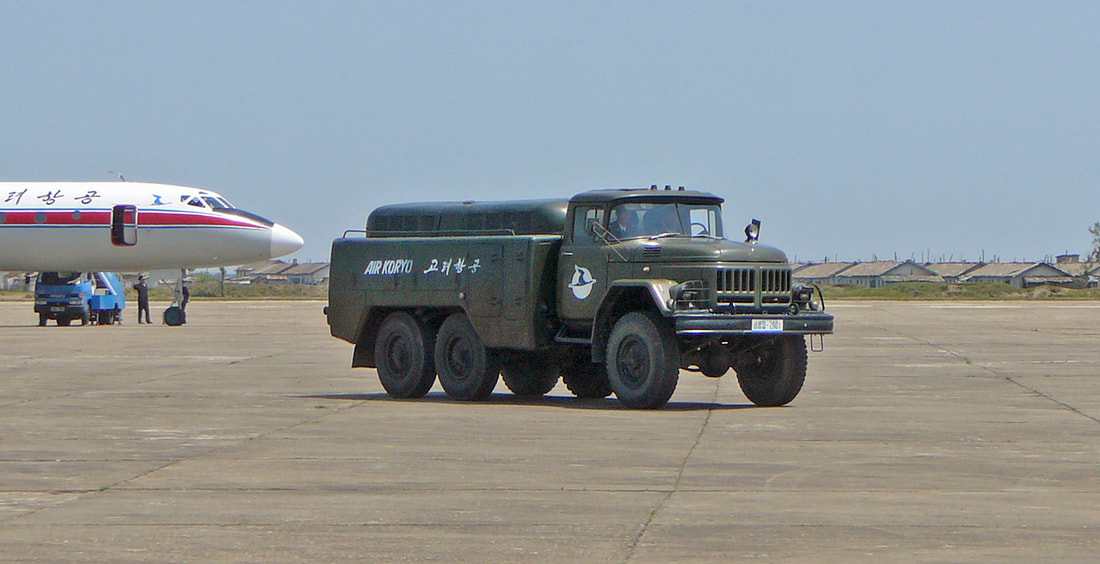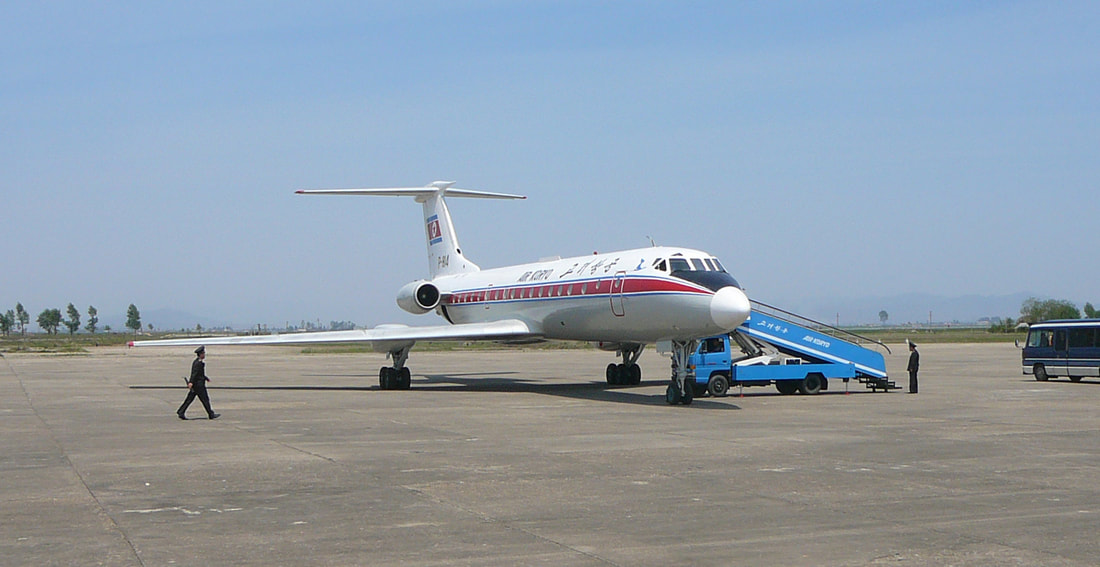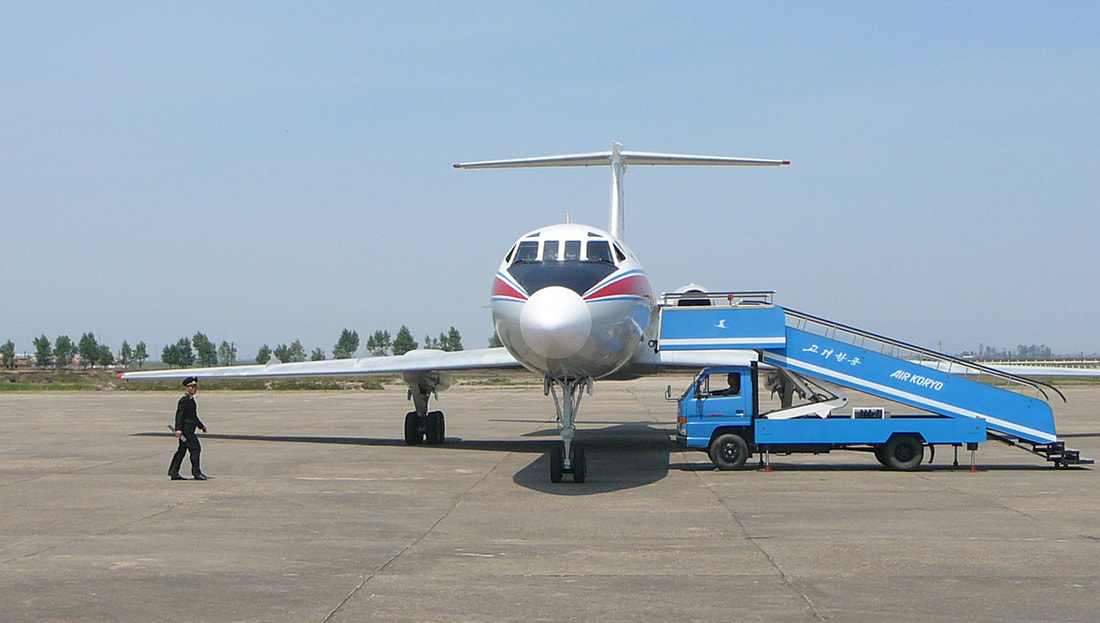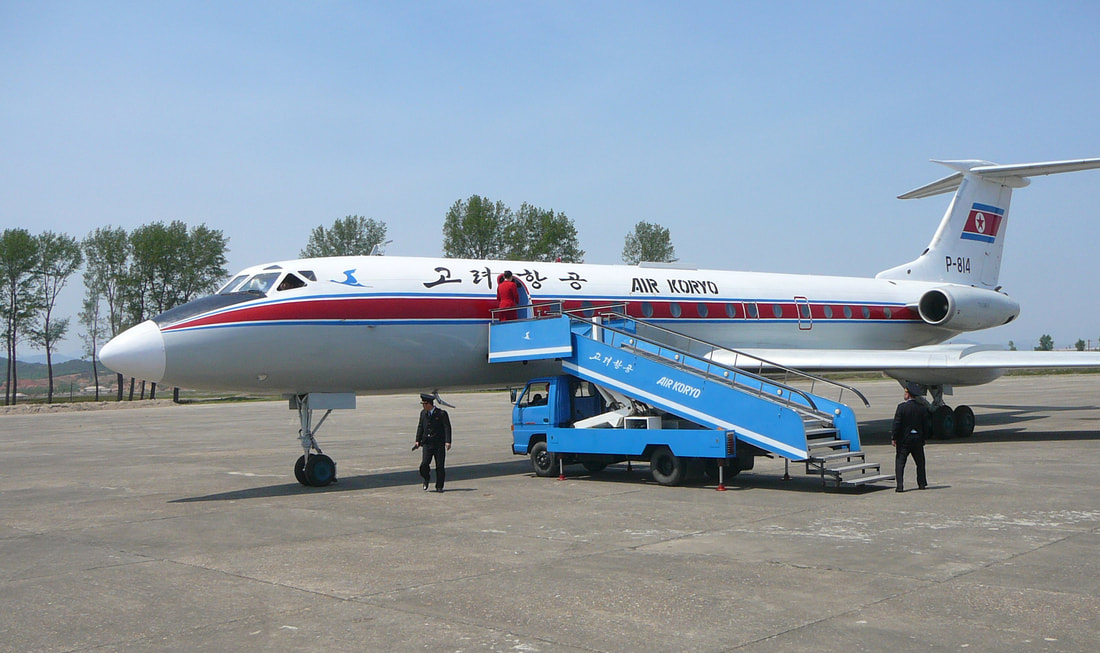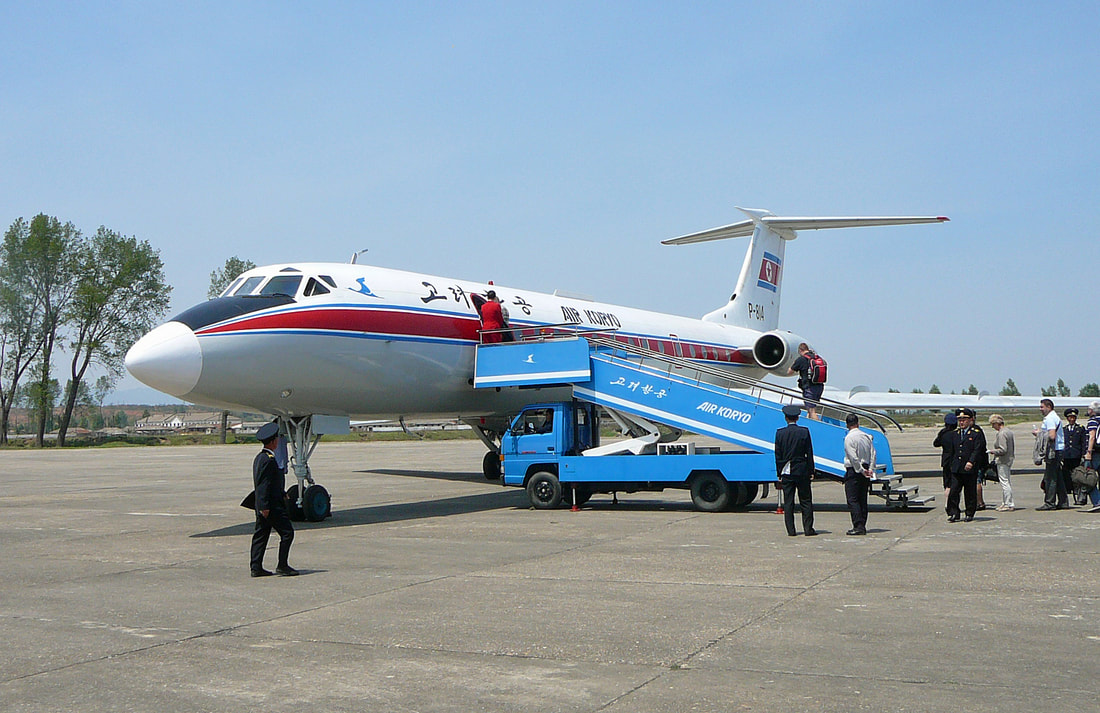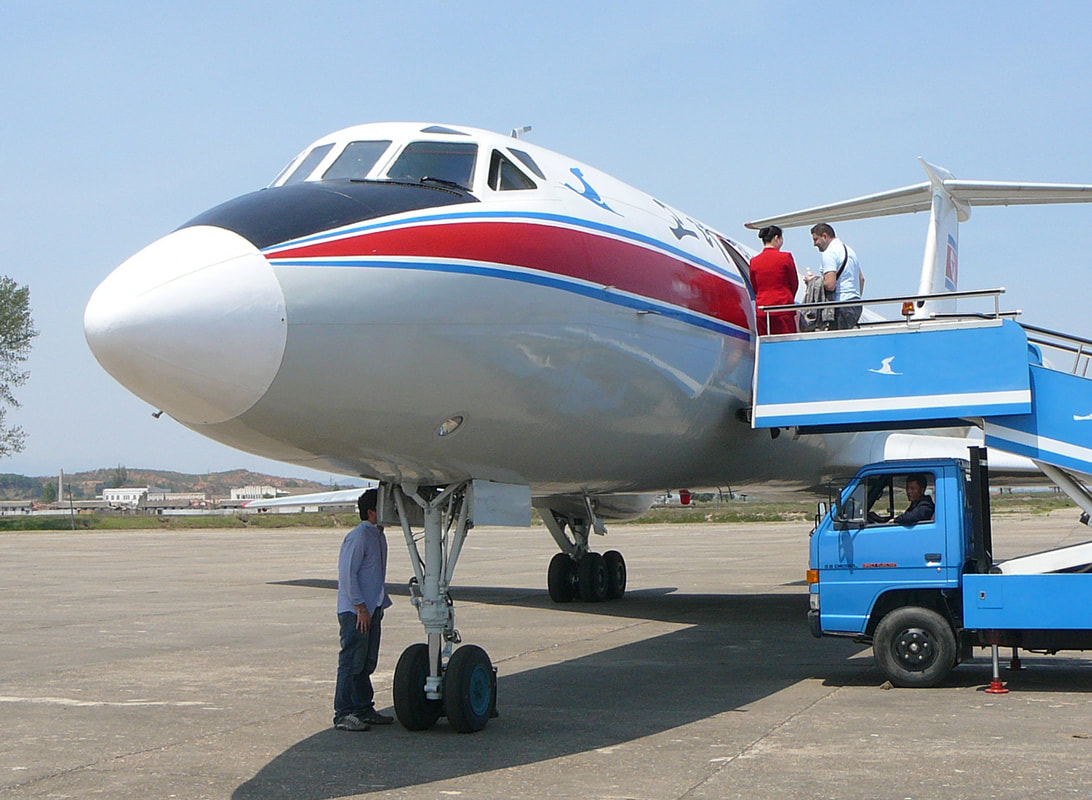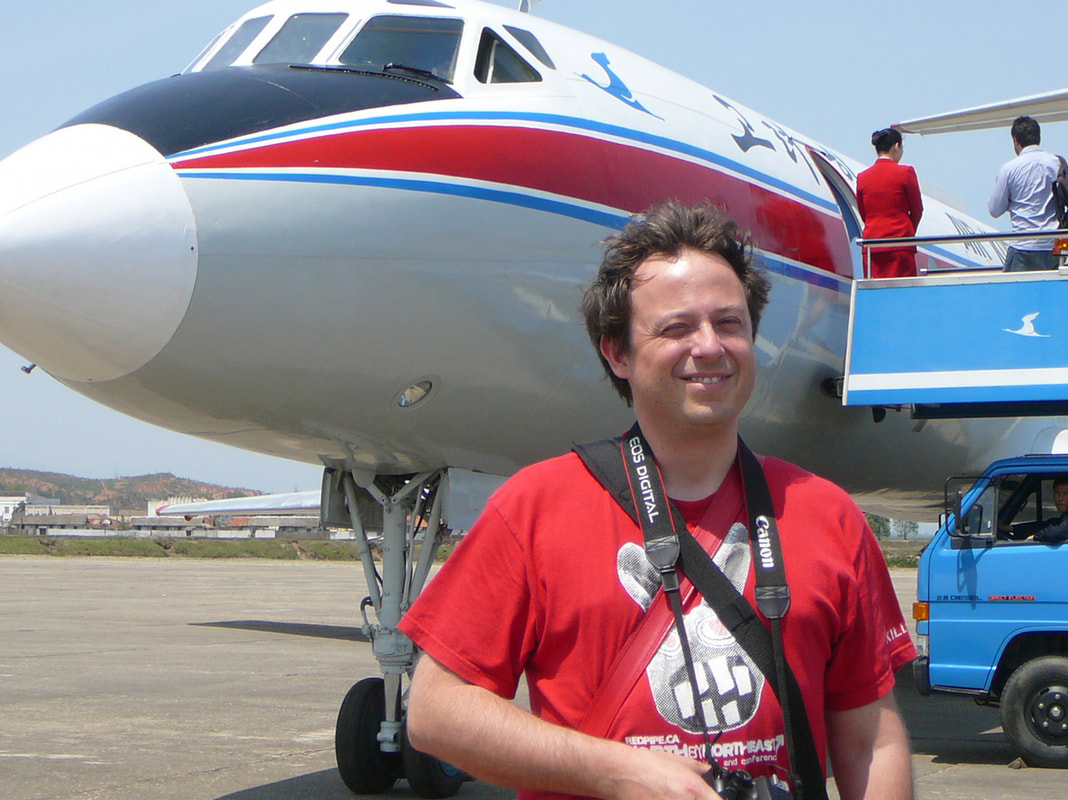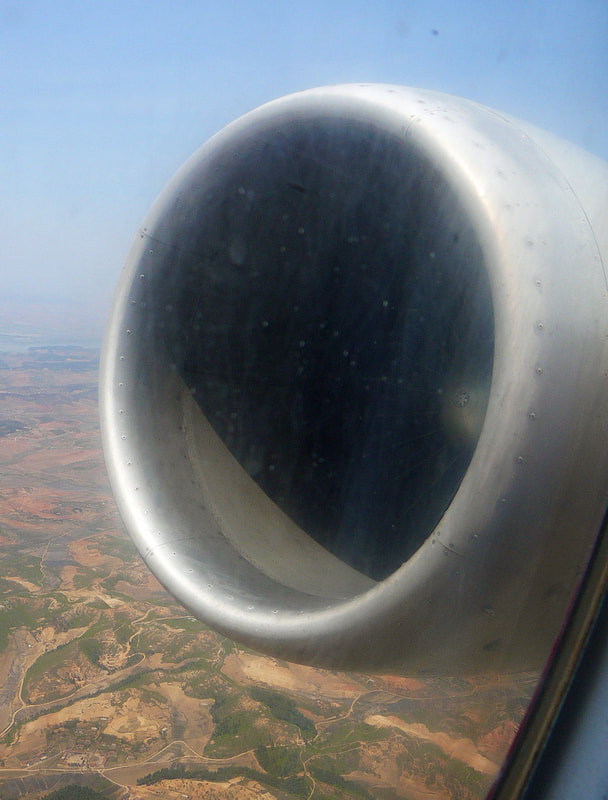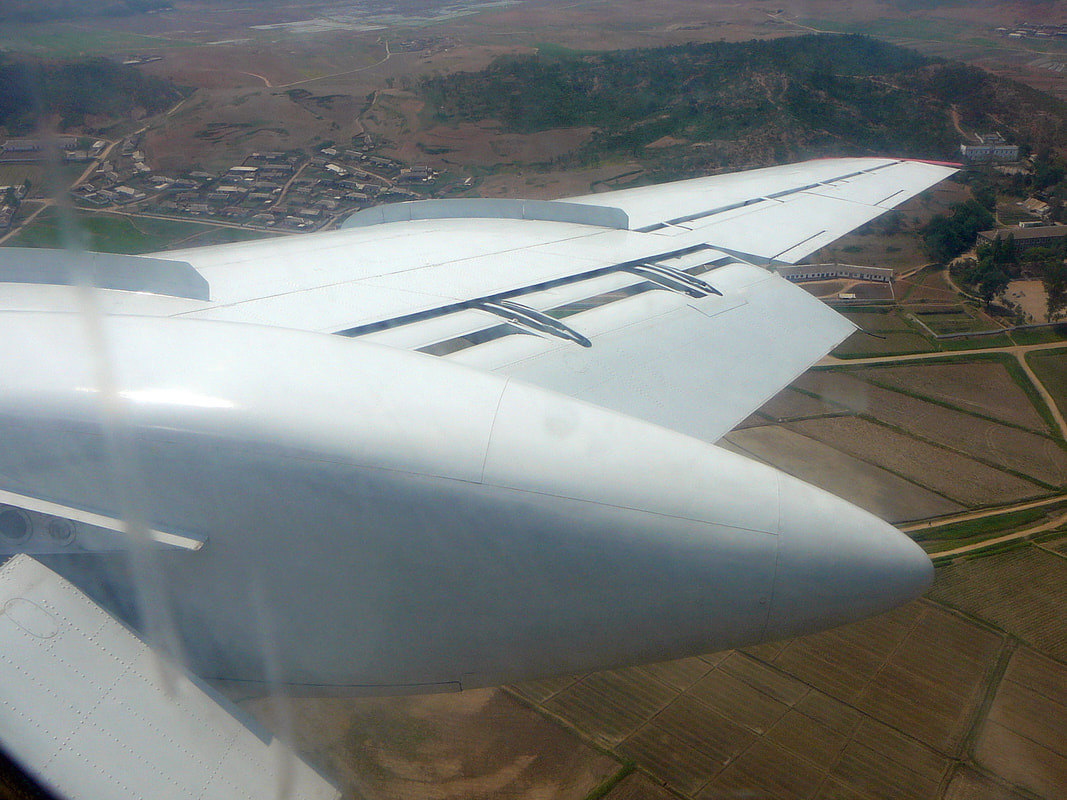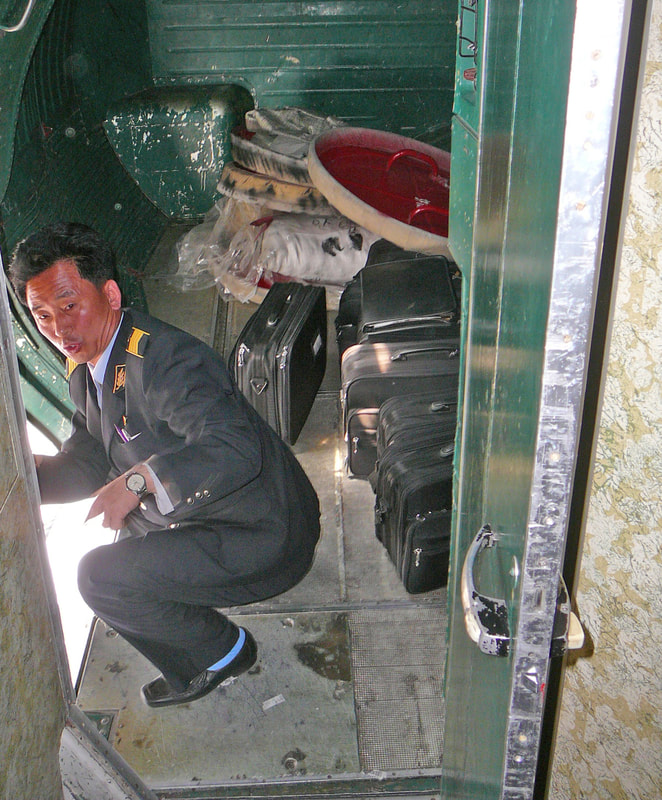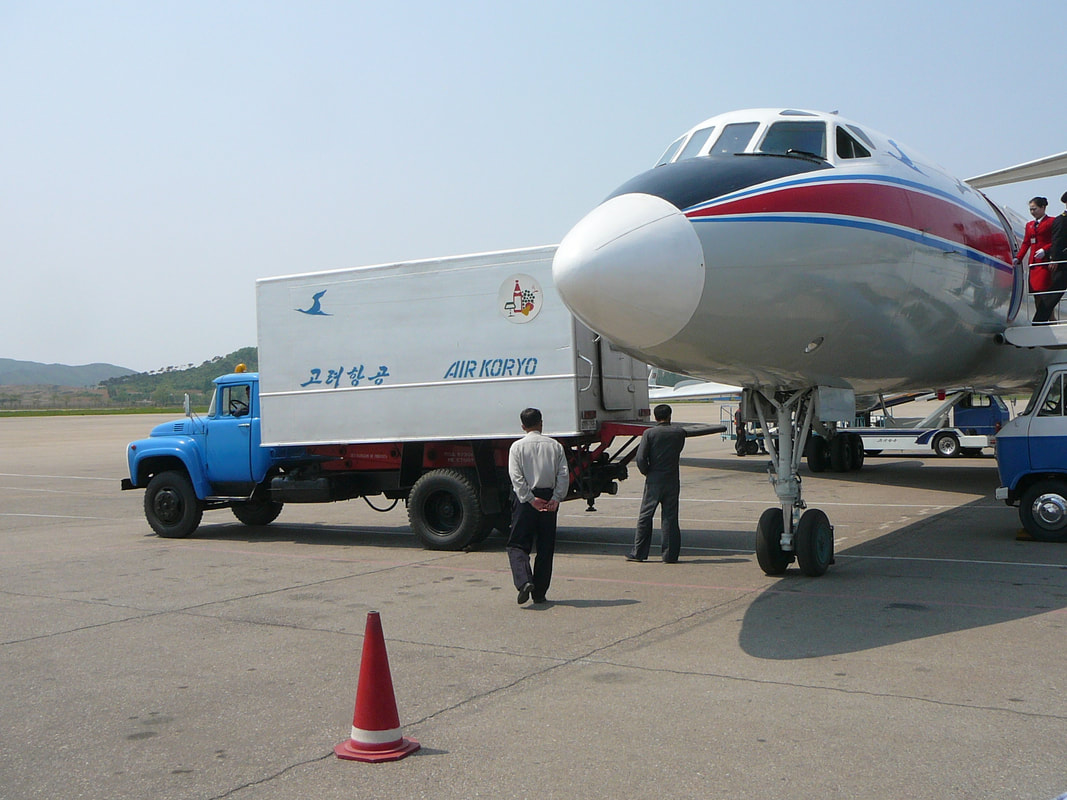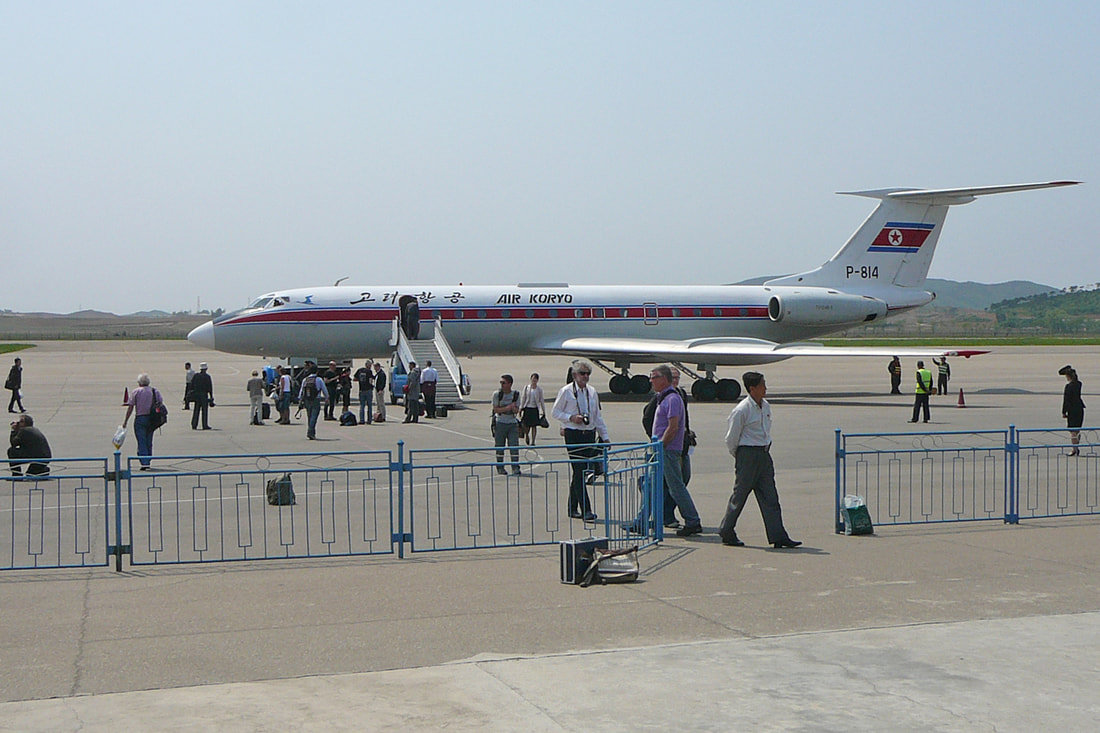Tupolev 134 to Hamhung-Sondok
Top dressed! P-814 is a particularly handsome example.
P-814 chocked at Pyongyang.
P-814 awaiting her load.
What a great selection of ground equipment, they don’t make Air-Stairs like that anymore.
P-814 takes on a load of aviation enthusiasts at Pyongyang.
Tupolev built a legendary airframe.
Air Koryo TU-134B P-814 nose close-up, at Pyongyang, North-Korea. May 2012.
Our North-Korean Tu-134 driver!
Parked nearby were, wrapped up IL-76M P-912 and MIL Mi-8 '108'.
Air Koryo Tu-134B P-814 at Pyongyang, North-Korea on May 16, 2012, preparing for the morning departure to Hamhung.
The landing gear fitted with low-pressure tires to permit operation from unpaved airfields.
This aircraft is powered by two Aviadvigatel D-30 II engines.
Jump back in time and relive the past by flying airliners that, in other countries, would have been scrapped over 30 years ago.
Our Tupolev roared skywards.
Low approach over the outskirts of Hamhung.
Ofcourse, I had to make a customary flight deck visit.
There’s an incomparable mystique and magic about flying in Soviet-era aircraft.
A classic cockpit view of the Tu-134B.
Why do Russian cockpits always have a light blue or green finish. It is easier and more restful for your eyes, less contrast. Bit like surgical gowns used to be white, now always blue or green.
Her switches and controls, worn smooth by the touch of a thousand hands!
The Tu-134 cockpit, a capsule from halcyon days!
P-814 resting at Hamhung, Sondok airport.
Mr. Steve Kinder awaits his fellows, in front of the terminal at Hamhung, Sondok airport.
Hamhung is much more economically diverse than most cities in North Korea, as Hamhung has many unique industries. Hamhung's rural areas are used for farm land and food distribution through the community. These lands mainly consist of paddies, but other crops are grown in small portion as well. Hamhŭng is an important chemical industry center in the DPRK. It is an industrial city which serves as a major port for North Korean foreign trade. Production includes textiles (particularly vinalon), metalware, machinery, refined oil and processed food.
While prior to liberation of Korea Hamhung had an extremely backwards economy due to the destructive actions of the Japanese, the city was rapidly developed afterwards, with new industrial districts being built and being broken free of colonial acquisitions of material. Much of the heavy industrial equipment used in other cities are built in Hamhung, and its production contributes to the monumental construction of buildings under projects launched by the Workers' Party.
The city was 80–90% destroyed by American air raids during the Korean War (1950–1953)
P-814 calmly awaits passengers.
Air Koryo Tupolev Tu-134B P-814, gleaming on the Hamhung-Sondok Airbase apron, May 18, 2012.
I really don't know what he was looking for?
I really don't know what he was looking for?
P-814 is powered by twin 15,000-lb thrust Soloview D-30’s, fitted with thrust reversers to shorten the landing run.
Looks like a mobile military groundpower unit.
Our pristine 'Tup' is patiently waiting at Hamhung, Sondok airport.
Air Koryo Tupolev Tu-134B P-814, gleaming on the Hamhung-Sondok apron, May 2012.
Using the stairs enhanced the experience of getting on an airplane - you saw the jet, heard the ambient sounds, smelled the Jet A and felt like you were a part of the process instead of filing through a sterile tube from a room into a cabin.
Another 'very efficient' turn-round for this Koryo Air Tupolev Tu-134B.
Our proud co-tour leader, Mr. Charles Kennedy.
We were rocketing down to Pyongyang.
The noises and entire in-flight experience is not be replicated anywhere else.
View from 'our' Tu-134, approaching Pyongyang.
Back at Pyongyang.
P-814 shortly after arrival at Pyongyang.
P-814 at the end of the day.
